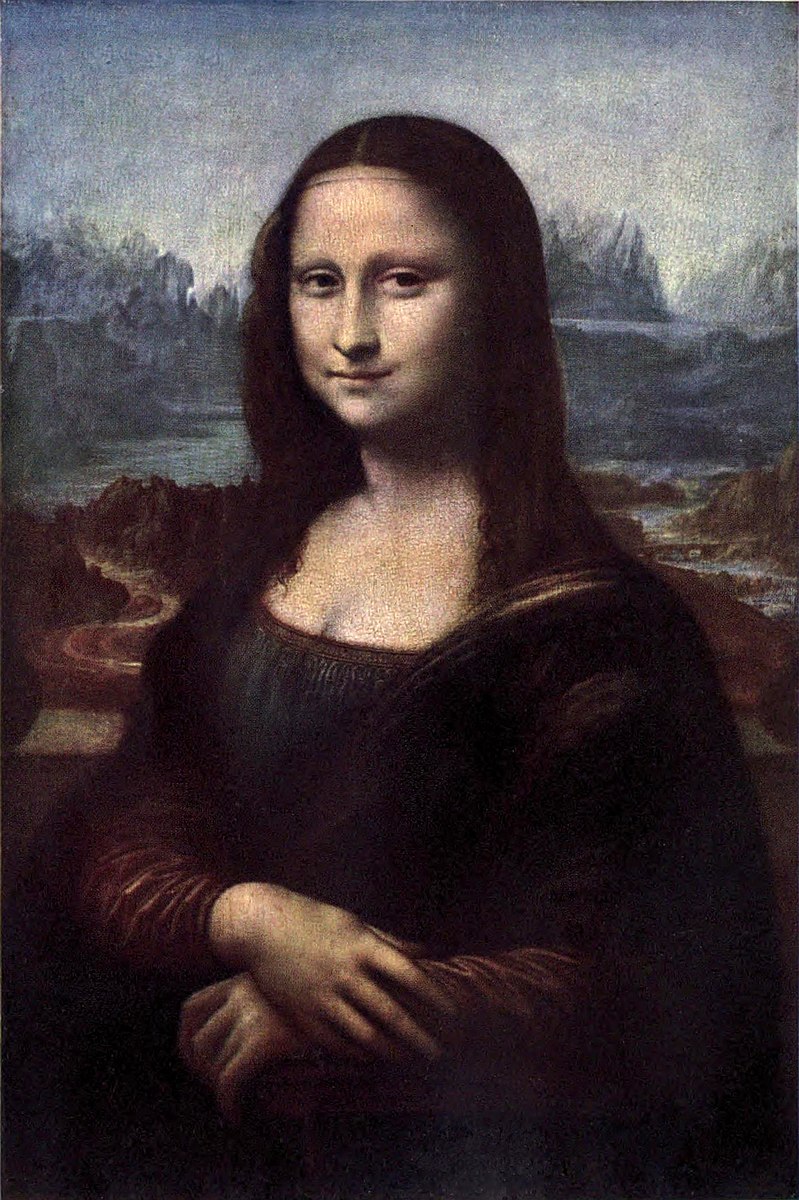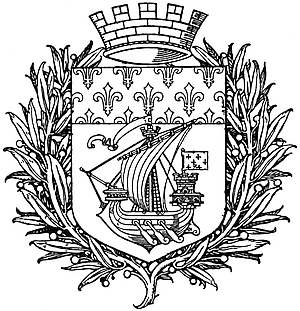E-text prepared by Turgut Dincer, Robert Tonsing,
and the Online Distributed Proofreading Team
()
from page images generously made available by
Internet Archive
(https://archive.org)
| Note: | Images of the original pages are available through Internet Archive. See https://archive.org/details/louvrefiftyplate00konorich |


(1452–1519)
FLORENTINE SCHOOL
No. 1601.—PORTRAIT OF MONA LISA
(La Joconde)
The portrait of Lisa di Anton Maria di Noldo Gherardini, third wife of Francesco di Bartolommeo de Zenobi del Giocondo. She is seated in a chair on which her left arm rests, her right hand superposed on the left. She is turned three-quarters to her right. Her hair, divided in the centre and seen under a transparent veil, falls in curls on her shoulders; her dark almond-shaped eyes look out at the spectator; the mouth is smiling. She wears a dark-green dress with golden-brown sleeves; a dark cloak is draped over her shoulders. The background is formed by a mountainous landscape full of incident.
Painted in tempera on panel, and restored in oil.
2 ft. 6½ in. × 1 ft. 9 in. (0·79 × 0·53.)
THE LOUVRE:
FIFTY PLATES IN COLOUR

DODGE PUBLISHING COMPANY
214–220 EAST 23RD STREET
PREFACE
THOSE who wish to make a thorough, comprehensive, and systematic study of the pictures of the great national collection contained in the Louvre, which extend from the early years of the fourteenth century down to almost the present day, will be well advised to deal with the artists by the countries, schools, and periods to which they belong. That is the scheme which we have followed here.
We do not hesitate to refer to painters, especially those of the Italian schools, under the names by which they are generally known to modern critics, as opposed to those under which they are officially catalogued by the Louvre authorities. Thus, Raphael, Titian, and Giulio Romano, and not Santi, Vecelli, and Pippi, are the names which we shall use in this book. Special attention is drawn to the fact that the official attributions of a certain number of the pictures, mainly of the Italian school